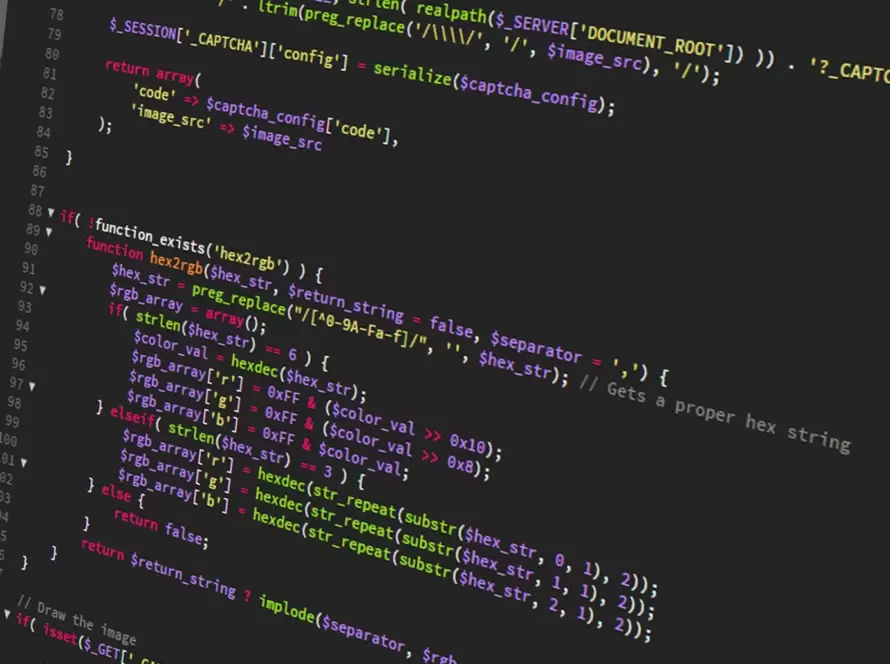Published by Contentify AI
- Introduction
- Understanding WebSockets
- Setting Up WebSockets with PHP
- Implementing Real-Time Features
- Conclusion

Introduction
The digital landscape is continuously evolving, and today’s web applications demand more interactive and real-time functionalities than ever before. This is where the combination of PHP and WebSockets becomes a powerful tool for developers. Building real-time applications with PHP and WebSockets enables seamless, bidirectional communication between clients and servers. This technology pairing is instrumental in developing applications that require instant data updates without needing to refresh the web page, such as chat apps, live sports updates, or real-time analytics. By leveraging PHP, a server-side scripting language known for its ease of use and flexibility, together with WebSockets, which facilitates full-duplex communication channels over a single TCP connection, developers can create highly responsive and interactive web applications. This synergy not only enhances user experience but also opens up a world of possibilities for web development projects.
Understanding WebSockets
WebSockets represent a significant leap forward in web development, providing a method for open, interactive communication sessions between the user’s browser and a server. With this technology, data can be passed back and forth as needed without requiring the client to initiate requests, a limitation of traditional HTTP communications. This feature is particularly vital when building real-time applications with PHP and WebSockets, as it ensures that information such as messages, notifications, or live data feeds is instantly updated, creating a dynamic and engaging user experience.
Understanding the core of WebSockets involves recognizing how they fundamentally differ from standard HTTP connections. Unlike HTTP, which is stateless and requires a new connection for each request/response cycle, a WebSocket creates a persistent, full-duplex channel over a single long-lived connection. Through this channel, data can flow freely in both directions as soon as it becomes available, minimizing latency and overhead. For developers, this means that the complexities of polling or long-polling mechanisms to simulate a real-time effect can be avoided, simplifying the architecture of real-time web applications.
When integrating WebSockets with PHP, developers utilize PHP to handle the server-side logic of the application. PHP scripts can establish a WebSocket server that listens for connections, manages data transmission, and handles concurrent connections efficiently. The combination of PHP’s server-side capabilities with the real-time, bidirectional communication offered by WebSockets empowers developers to build sophisticated real-time applications. These applications can range from chat systems and live content updates to interactive games and real-time analytics tools, all benefiting from the immediate data exchange WebSockets facilitate.
Moreover, the practical deployment of WebSockets with PHP requires a consideration of the server environment and the management of WebSocket connections alongside traditional web traffic. Developers need to ensure that their server infrastructure is configured to support WebSocket connections, which may involve adjustments to proxy settings and firewall rules to allow for the upgrade of HTTP connections to WebSocket protocols.
In essence, the fusion of PHP and WebSockets paves the way for creating more interactive, efficient, and engaging web applications. By understanding and leveraging the capabilities of WebSockets, developers can overcome the limitations of conventional web technologies and deliver real-time experiences that today’s users expect.
Setting Up WebSockets with PHP
To embark on the journey of building real-time applications with PHP and WebSockets, the initial step involves setting up the WebSocket environment in conjunction with PHP. This process lays the foundation for enabling live, interactive communication between your server and clients.
The setup process begins with choosing a suitable PHP WebSocket library. Ratchet and phpwebsocket are popular choices among developers for their ease of use and robust performance. These libraries provide a framework for developing WebSocket servers in PHP, significantly simplifying the task of handling WebSocket connections.
Next, installing and configuring the chosen library is crucial. For Ratchet, for instance, you can use Composer, PHP’s dependency manager, to include the library in your project. A simple command like `composer require cboden/ratchet` will fetch and install Ratchet for you. This step ensures that all necessary components are integrated into your project, ready for use.
Creating a WebSocket server in PHP is the next milestone. This involves writing a PHP script that uses the WebSocket library to listen for incoming connections on a specific port. The server script is responsible for managing connection handshakes, maintaining open connections, and handling incoming and outgoing messages. Here, developers will define the logic for the desired real-time features, whether it’s broadcasting messages to all connected users or handling individual user requests.
Testing the WebSocket server is a critical part of the setup process. This can be done locally or on a development server, using WebSocket client applications or custom JavaScript in the web browser to establish connections and exchange messages with the PHP WebSocket server. Successful testing confirms that your server is correctly handling WebSocket connections, paving the way for the next phases of development.
Lastly, deploying the WebSocket server to a live environment requires careful consideration. It’s essential to ensure that the live server supports persistent connections and is configured to keep the WebSocket server running continuously. Also, attention should be given to security aspects, such as implementing WebSocket Secure (WSS), to encrypt data transmission between clients and the server.
By meticulously setting up WebSockets with PHP, developers lay the groundwork for building real-time applications that offer seamless, live interactions. This foundation is critical for developing a range of applications, from chat systems and live broadcast tools to interactive games and real-time data visualization, all of which can significantly enhance user engagement and satisfaction.
Implementing Real-Time Features
Implementing real-time features in your web applications requires a strategic approach, especially when using PHP and WebSockets. This powerful combination allows developers to integrate live functionalities such as chat systems, instant content updates, and interactive gaming features, which are crucial for enhancing user engagement and delivering a dynamic user experience.
To begin, assess the specific real-time features your application needs. For instance, if you’re developing a chat application, the primary requirement would be the ability to send and receive messages instantly. On the other hand, a sports app might need live score updates. Understanding these requirements is key to determining the architecture and flow of data between your server and clients.
Once the requirements are clear, the next step involves setting up a WebSocket server using PHP. This server will manage all WebSocket connections, allowing for full-duplex communication between the client and server. Utilizing a PHP library like Ratchet can simplify this process by handling the underlying WebSocket protocol.
After establishing the WebSocket server, focus on designing the client-side logic. This typically involves writing JavaScript that runs in the user’s browser. The JavaScript code should initiate a WebSocket connection to the server and define functions to handle incoming messages. Moreover, it should manage sending messages from the client to the server, effectively enabling real-time communication.
Security is also a paramount concern when building real-time applications with PHP and WebSockets. Implementing features such as authentication for WebSocket connections, encryption of data in transit using SSL/TLS, and sanitizing all incoming messages to avoid injection attacks are essential steps in safeguarding your application.
In addition to these technical considerations, it’s important to test the real-time features thoroughly across various scenarios and network conditions. Simulating high traffic and low bandwidth environments can help ensure that your application remains responsive and stable, providing a seamless experience for all users.
Incorporating real-time features into your applications can significantly enhance user engagement and satisfaction. By carefully planning, implementing, and securing these functionalities, developers can leverage the full potential of PHP and WebSockets to build compelling web applications. Whether it’s for chatting, live updates, or interactive experiences, the combination of PHP and WebSockets is a robust solution for any developer looking to bring real-time capabilities to their projects.
Conclusion
In the realm of web development, the final step in building real-time applications with PHP and WebSockets marks the culmination of a journey towards creating engaging, dynamic user experiences. This innovative combination of technologies has transformed the way users interact with online platforms, allowing for instant communication and updates without the need for page reloads. As developers, it’s crucial to reflect on the lessons learned and the pathways opened by these real-time capabilities.
One of the key takeaways from this process is the importance of seamless, bidirectional communication between the client and server. This core feature not only enhances user engagement but also paves the way for more complex and interactive applications. From real-time chat applications to live sports updates, the use of PHP and WebSockets has broadened the horizon of what web applications can achieve.
Furthermore, the journey underscores the significance of choosing the right tools and libraries to support the development of real-time features. The integration of PHP with WebSocket libraries such as Ratchet or phpwebsocket has proven to be effective in managing WebSocket connections and ensuring efficient data transmission.
Security concerns, performance optimization, and scalability are also paramount when building real-time applications. Implementing SSL/TLS encryption, managing resource allocation wisely, and ensuring the application can handle multiple concurrent connections are critical steps that ensure the application not only works well but is also secure and scalable.
Looking to the future, the possibilities for building real-time applications with PHP and WebSockets are endless. As technology continues to evolve, developers will discover new ways to leverage these tools, pushing the boundaries of real-time interactivity and creating even more immersive online experiences. Whether it’s through improved frameworks, enhanced security protocols, or innovative application ideas, the journey of building real-time applications with PHP and WebSockets is just beginning.



